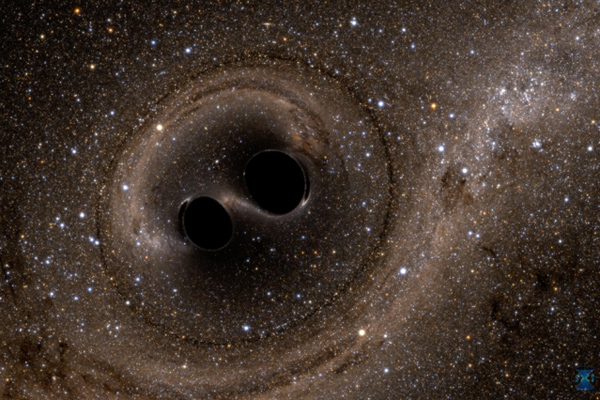
It’s an exciting week for black holes — not only was the first ever image of a black hole shared by the National Science Foundation, but the hunt for gravitational waves caused by colliding black holes is also heating up.
The Laser Interferometer Gravitational-Wave Observatory (LIGO), the Nobel-winning observatory dedicated to hunting for gravitational waves, has only been in operation for two weeks. But already they are finding exciting results. The observatory has already seen evidence of two pairs of colliding black holes, according to Gizmodo.
These observations mean that other telescopes around the world can be alerted to be on the lookout for altered light waves which are effected by the same events as the gravitational waves. Christopher Berry, professor at Northwestern University, told Gizmodo that the gravitational waves detected appear to be a promising source of data: “They have passed our initial checks that the detectors were behaving. We’re now doing more careful checks, and will perform more thorough analyses to work out their properties.”
In addition, a new project from West Virginia University will allow members of the public to contribute to the search for gravitational waves by giving over processing power from their computers. The BlackHoles@Home project follows in the footsteps of Folding@Home and other similar projects which use distributed computing power to make use of idle processor power for scientific projects. The BlackHoles@Home project will use the public’s computers to chew through the massive amounts of data collected to search for evidence of gravitational waves.
“As our gravitational wave detectors become more sensitive, we’re going to need to greatly expand our efforts to understand all of the information encoded in gravitational waves from colliding binary black holes,” West Virginia University assistant professor Zachariah Etienne said in a statement. “We are turning to the general public to help with these efforts, which involve generating unprecedented numbers of self-consistent simulations of these extremely energetic collisions. This will truly be an inclusive effort, and we especially hope to inspire the next generation of scientists in this growing field of gravitational wave astrophysics.”
Etienne’s team is currently creating the downloadable software which will allow people to contribute to the efforts. They hope to release the free software later this year, and you can keep an eye on the project status at the BlackHoles@Home website.



